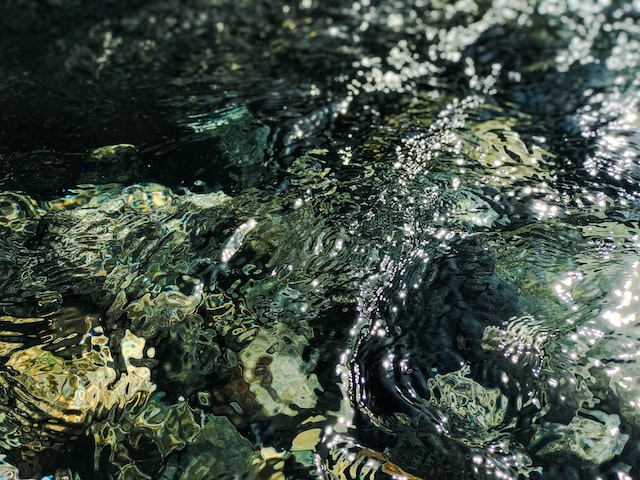Vancouver – At the Fifth International Marine Protected Areas Congress (IMPAC5), the Honourable Joyce Murray, Minister of Fisheries, Oceans and the Canadian Coast Guard, Chief John Powell (Winidi) of the Mamalilikulla First Nation, and the Honourable Nathan Cullen, B.C. Minister of Water, Land and Resource Stewardship, announced fisheries closures and the establishment of a marine refuge, to help protect the ecologically and culturally significant area of Gwaxdlala/Nalaxdlala in Knight Inlet on the coast of British Columbia.
Marine refuges are intended to be long-term in nature to help protect important species and habitats. All commercial, recreational and Food, Social and Ceremonial (FSC) fisheries will be closed within the area to prevent impacts from human activity and to ensure full protection of the marine environment.
In consultation with the Mamalilikulla First Nation and the Province of British Columbia, Gwaxdlala/Nalaxdlala – also known as Lull Bay and Hoeya Sound – was identified as an important area that includes a globally unique ecosystem of fragile and slow-growing corals and sponges that provide habitat for more than 240 marine species. It is also identified as an area of high cultural significance by the Mamalililkulla First Nation. Gwaxdlala/Nalaxdlala is the first marine refuge to be recognized through the Northern Shelf Bioregion Marine Protected Area (MPA) Network planning process, and it represents years of work between Canada, the Province of British Columbia and the Mamalilikulla First Nation.
The Government of Canada is committed to conserving and protecting Canada’s marine ecosystems for future generations, advancing reconciliation with Indigenous Peoples, and supporting sustainable fisheries management.
“The establishment of the Gwaxdlala/Nalaxdlala (Lull/Hoeya) site as the first marine refuge in the Northern Shelf Bioregion Marine Protected Area Network was the result of close collaboration between First Nations, federal, and provincial partners. This is a significant achievement in Canada’s commitments to advance reconciliation with Indigenous Peoples and protect important marine areas. Only by working together at all levels can we achieve Canada’s marine conservation targets to protect 25 per cent of Canada’s oceans by 2025.” – The Honourable Joyce Murray, Minister of Fisheries, Oceans and the Canadian Coast Guard
“Our Nation’s 2021 Indigenous Protected and Conserved Area declaration invited Canada and British Columbia to work with us on urgent protection of the sensitive corals and sponges in Gwaxdlala/Nalaxdlala, and to begin discussions on collaborative management to incorporate our ancient laws and practices. We offered collaboration to advance this site as a contribution to Canada’s conservation targets and to demonstrate a commitment to reconciliation. This important decision on Gwaxdlala/Nalaxdlala demonstrates the power of working together to achieve shared objectives. We look forward to continuing this collaborative effort between Canada, British Columbia and Mamalilikulla First Nation.” – Chief Councillor Winidi (John Powell), Mamalilikulla First Nation
Quick Facts
- The Gwaxdlala/Nalaxdlala (Lull/Hoeya) site is located in Knight Inlet, a fjord in B.C.’s Northern Shelf Bioregion (NSB) at the north end of Johnstone Strait and east of Port McNeill.
- The site measures 21.2 km2 and contains unique and highly valuable features that support ecological and cultural priorities for the Northern Shelf Bioregion.
- Hoeya Sound is a Mamalilikulla clan place of origin, that was historically used for village sites, hunting, fishing and trapping purposes, and contains important shoreline and sub-tidal archaeological sites.
- The Northern Shelf Bioregion Network Action Plan (NAP) identifies ecological and cultural conservation objectives for the Gwaxdlala/Nalaxdlala site that support the broader network goal to protect and maintain marine biodiversity, ecological representation and special natural features.
- The marine refuge at the Gwaxdlala/Nalaxdlala (Lull/Hoeya) site will ensure full protection of the marine environment.
- Marine refuges are area-based fisheries closures under the federal Fisheries Act that contribute to the conservation of biodiversity over the long-term. Marine refuges qualify as other effective area-based conservation measures (OECMs), under Canada’s newly announced (2022) OECM guidance and support Canada’s marine conservation targets.
- On November 29, 2021, the Mamalilikulla First Nation publicly announced Gwaxdlala/Nalaxdlala (Lull Bay and Hoeya Sound) and the adjacent Lull and Hoeya watersheds as an Indigenous Protected and Conserved Area (IPCA), which is an Indigenous-led conservation initiative that reflects the objectives and needs of the Mamalilikulla First Nation.
- The Mamalilikulla’s IPCA marine and watershed management plans have been used to develop a joint plan with Provincial ministries that will ensure comprehensive conservation beyond the marine refuge to the entire area included within the IPCA. The Province of British Columbia, Ministry of Water, Land and Resource Stewardship, and the Ministry of Forests, are developing land-based designations that will reinforce its joint planning with Mamalilikulla









